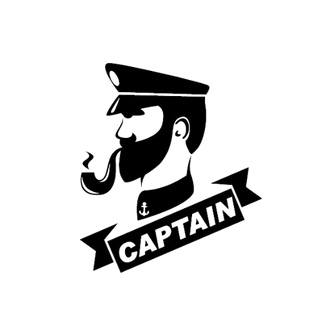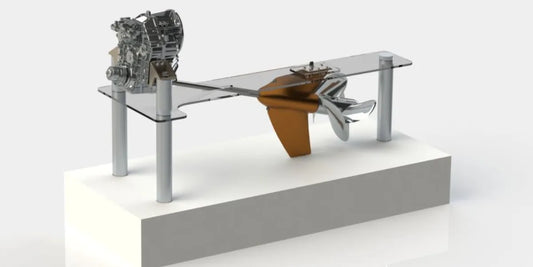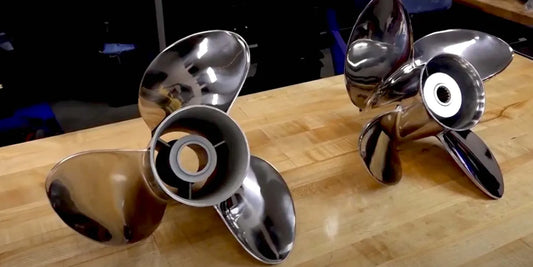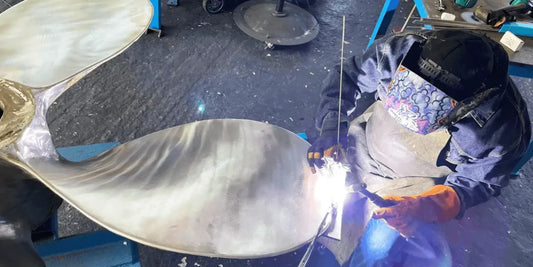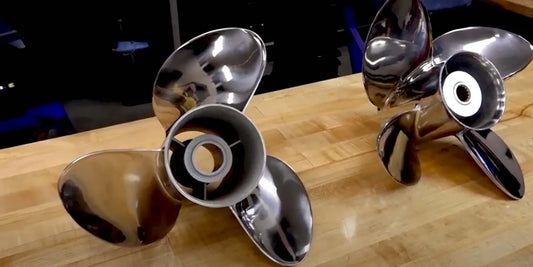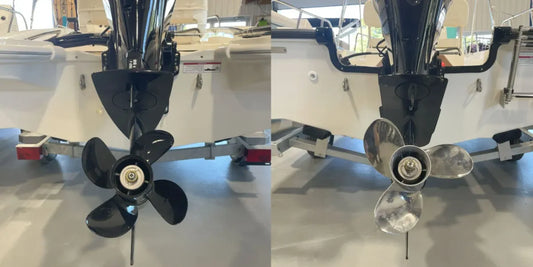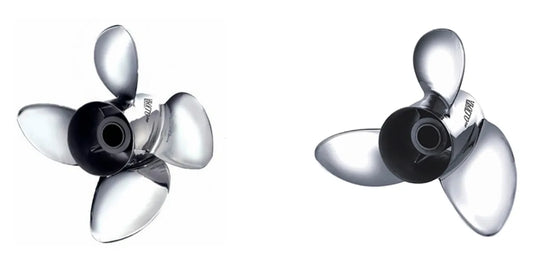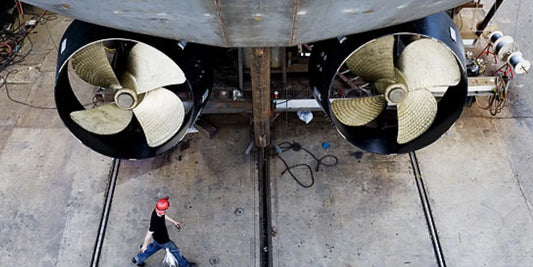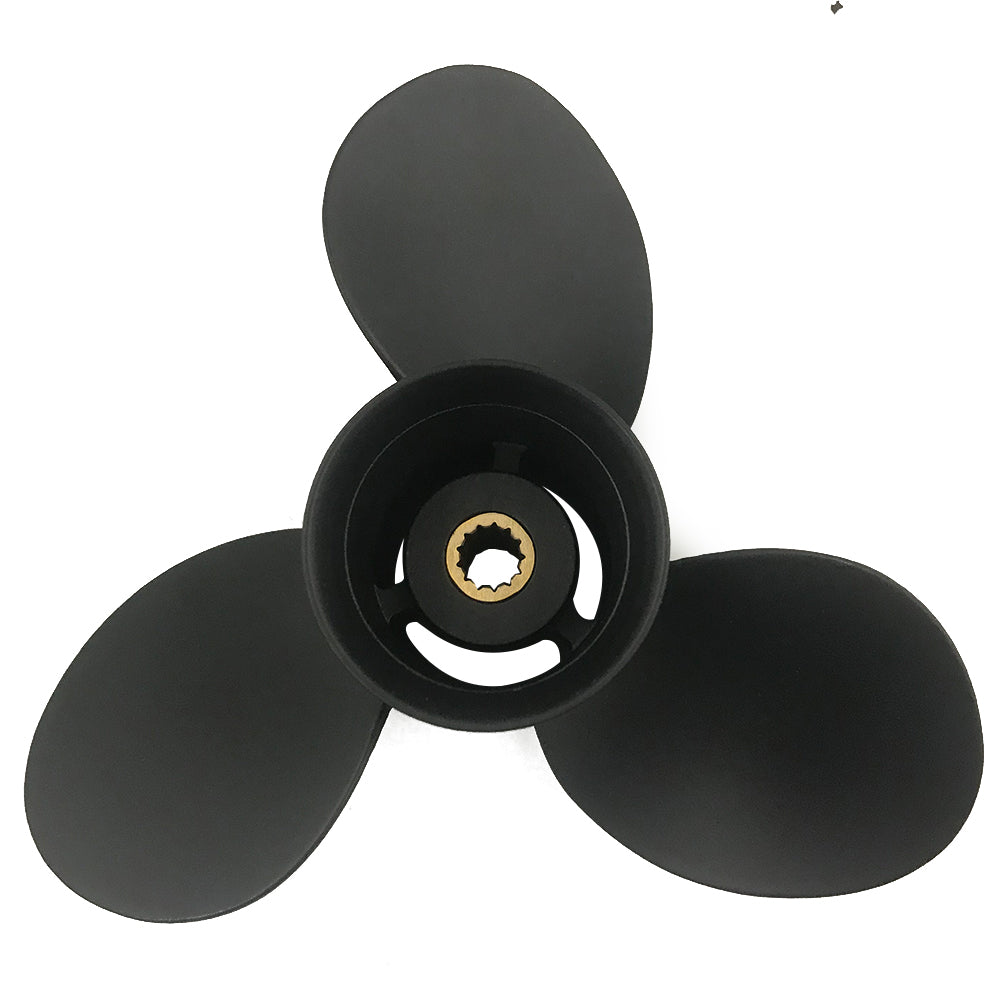Boating aficionados will tell you that being in top condition is paramount for performance, the final element that makes an outing enjoyable and safe to venture into the waters. One dastardly problem is a spun prop, a mechanical failure that will incapacitate your propulsion system, leaving you stranded and frustrated out there. Now, what exactly causes a prop to spin and how might you stop this from happening? The article takes you through the technicalities emerging from spun pros: the reasons that lead to this problem and the do's and don'ts to mitigate the risk. Understanding these will help protect a boat's performance, extend its prop life, and prevent a stressful boating experience.
Understanding the Propeller and Its Components

What is a Prop Hub?
A Prop Hub (some might call a "propeller hub"), in essence, links the engine's driveshaft to the propeller blades in an efficient manner. The hub powerfully transmits power from the engine to the propeller blades by generating thrust equitably. Consequently, the latest prop hubs are usually made with rubber or composite materials for durability, while also absorbing shocks to lessen vibrations that could damage the drive train. This design is significant for the protection of the main drive components in an emergency when the propeller sustains an extreme load, such as hitting an underwater log or mesh. An understanding of the structure and working of the prop hub is essential when trying to figure out slippage, fault, etc., in propeller performance.
What Rubber Does in the Prop Hubs?
The rubber acts as a critical element in prop hubs because of its unique elastic properties, all functioning toward damping vibration and managing torque. That is how rubber will absorb and dissipate energy coming down the propeller shaft and lessen the wear to the connected drivetrain components. With the modern developments in rubber compounds, their durability has been dramatically enhanced against external elements such as corrosion from saltwater or heat degradation. Since it can withstand these conditions, a prop hub of this sort will see extended service and provide better propulsion with less vibration transmitted. Rubber also protects against sudden impacts or overloads by damping and distributing the shock, thereby preventing cataclysmic failures within the propeller assembly. Rubber refinements will maintain efficient and reliable marine propulsion systems into the future.
Common Symptoms of a Spun Hub
One of the most routinely observed defects is the loss of propeller thrust; thus, the propeller-propelling system operates with very few restrictions. Since propeller torque is being produced by external forces, at other-adsorbing resistance under the increase of engine revs, slipping events occur, the rubber hub has lost its ability to hold annularly under load. On the other hand, irregular and/or excessive vibration may be detected during operation, which indicates that the torque is no longer being properly applied to the water by the propeller. This causes other symptoms with big practical consequences that need to be considered. Inevitable fuel inefficiency could be felt as the unwilling propulsion uses power at an increased rate. The mechanical see-saw places into practical observation as burn marks or deformation appear on the rubber hub during the inspection. Proposed identification of symptoms early on can prevent further mechanical damage or operational inefficiency to the propulsion system, whatever the case may be.
Identifying the Causes of a Spun Prop

Mechanical Failures Causing Slips
One major mechanical failure that causes a spun propeller is the degradation or failure of the rubber hub inside the propeller assembly. With time, the rubber hub, which is supposed to provide cushioning and absorb shocks, hardens or cracks or loses adhesion by extended exposure to adverse operating conditions such as excessive torque or high temperature. This degradation impairs its capability to properly grip the propeller shaft under load, leading to slippage.
Another factor is the wear or damage to the splines on the propeller shaft or in the hub itself. When the splines become worn or stripped by incorrect installation, excessive force, or lack of maintenance, the mechanical connection is weakened and compromised in transferring torque. Vibration during operation, if at high levels, may contribute to accelerated spline wear and subsequent failure.
Finally, propeller slippage can also occur when the components are improperly assembled or inadequately mounted. For instance, if the prop nut is not tightened enough, it might cause the propeller to loosen during operation, thereby changing its alignment and causing "unintended" slip. Hence, constant inspections and correct installation procedures must be observed to avoid these occurrences. Each one of these failures stresses the balance that must exist between a properly and adequately maintained propulsion system with all of its components for best functioning.
Environmental Factors That Contribute to Spinning
Spinning may be greatly impacted by environmental factors that affect the performance and interaction of key components within the system. For instance, the presence of strong wind currents generates instabilities in systems, especially in those exposed to the open environment. Airflow in such environments might cause uneven pressure fields, which may promote irregular spinning patterns. Likewise, water conditions, such as turbulence or differing salinity levels, will also have audio effects on the hydrodynamics of a submerged propeller, thereby influencing its rotational efficiency. Temperature variations would have a great effect; strong cold or heat might cause expansion or contraction of materials, thereby resulting in misalignment or inefficiency in the dynamics of the system. An understanding of these environmental constraints is necessary to deliver systems that resist external effects and perform consistently under various operating conditions.
Wear and Tear: The Passage of Time over Rubber Hubs
Rubber hubs are generally found in mechanical and industrial usages and experience slow degradation with time due to both internal alterations and external agents. Oxidative wearing and tearing remains the very first way of surface deterioration, where prolonged exposure to oxygen disintegrates the rubberous molecular structure, thus, eating away at the hardening and elastic properties of the substance. Likewise, the degradation of material due to UV radiation is accelerated as it breaks down polymer chains, resulting into the cracking and hardening of the surface. The repeated mechanical stresses then set their marks on this surface fatigue: abrasions, tearing, and a reduction of structural coherence.
Chemical exposure mainly to oils, solvents, or other industrial fluids would affect rubber composition, making it lose its resilience and hence faster wear subsystem. The temperature cycles will yet be great: constant expansions and contractions on slightly varying thermal conditions create additional stresses in micro-fissures of the material. These factors act together on the aging of the hub, causing misalignment, lower vibration dampening, and ultimate failure. Any preventive maintenance measures undertaken in the form of regular inspection and application of protective coating and additives can go a long way in minimizing the aging effects and hence extending the operating life of rubber hubs.
Preventative Measures for Boaters

Regular Maintenance to Avoid a Loose Prop
Consistent maintenance is essential in ensuring that the sea-going propeller performs best and in safety. A loose prop might cause an inefficient operation, increases in fuel consumption, and maybe damages other parts of the propulsion system. The key points in maintenance are to examine the propeller shaft for wear or corrosion, ensure the prop nut has been tightened according to the torque specifications provided by the manufacturer, and check the condition of the cotter pin for any deformation or rust.
The propeller should be periodically removed to be inspected for fishing line entanglements or debris that can cut into the seals and cause leaks. One should also look for early symptoms of imbalance, such as unusual vibrations or uneven wear of the blades, in order to correct the situation promptly. Along with these checks, cleaning and lubricating the moving parts also help to lower the risk of mechanical failure. If followed, this maintenance schedule would greatly minimize the occurrences of a loose prop and, therefore, increase operational reliability.
How to Inspect Your Prop for Early Signs of Trouble
In the inspection of a prop, to assure accurate inspection, a systematic approach must be incorporated so as to anticipate problems and proceed towards risk mitigation. First, a visual inspection of the prop is undertaken, and the lighting conditions should be ideal. Surface-level irregularities such as cracks, dents, or corrosion should be immediately searched for. More attention should be paid to the blade edges, as damage here can seriously impair the prop's performance and balance. Next, a tactile inspection or feel test needs to be carried out: run the fingers along the surface of each blade to check for imperfections that the eyes might not detect.
Check for variations in wear or misalignments at the hub and mounting surfaces, as these will cause an insecure fit along with the propeller. Use precision instrumentation such as the torque wrench to determine if the prop securing nuts are tightened to the specifications required by the manufacturer. Rotational balance must also be tested, either manually or with special equipment, to make sure that the rotation is smooth and that asymmetrical drag is absent. If operators start performing these intricate and thorough checks on a regular basis, they will definitely be able to ensure maximum performance and avoid costly downtime.
Selecting the Correct Propeller for Your Boat
Several crucial factors need consideration when choosing the right propeller for your boat, ensuring compatibility and smooth performance. First, the diameter and pitch of a propeller decide thrust exerted and efficiency of your vessel. The diameter of a prop is the distance from tip to tip of one blade, while the pitch is the theoretical distance a prop would move in one revolution through a soft solid, somewhat like a screw. Selecting the correct combination will affect acceleration, top speed, and fuel economy.
The next thing to consider would be the number of blades. Normally, a three-blade propeller offers a good balance of speed and efficiency; however, four blades tend to offer enhanced stability and handling, especially in rough conditions or when doing activities such as water skiing. The trade-off, however, is in a decreased top-end speed.
Another important point to consider is the composition of the propeller. Recreational boaters find aluminum propellers cheap and moderately durable, while stainless steel will provide much stronger propellers: they are more resistant to abrasion and corrosion and perform better in adverse conditions, perfect for fast or heavy-duty works.
The propeller hub design should also be considered. Warnings include rubber or hydraulic hubs that absorb shocks and lower the wear-and-tear of the drivetrain. This is a plus inshore-level vessels, which, in frequent use, will dive into waters covered with debris and sudden impacts.
A determined weighing of these specifications, accompanied by an understanding of the operational needs of your boat, will see you through the propeller choice just right and possibly exceeding those performance expectations.
Fixing a Spun Prop: Repair Options

Repair vs. Replace Your Prop
When deciding whether to repair or replace a spun propeller, a partnership must evaluate the extent of the damage and the operational demands of the vessel. A spun prop occurs when the rubber hub inside the propeller slips, thereby limiting propulsion despite engine running. Often, the engine may not produce the full RPM rating, or the thrust is noticeably low.
A spun prop is an economic repair if the only design damage is in the rubber hub and the blades are intact. Re-hubbing the prop consists of replacing the worn or damaged rubber hub and allows the prop to be restored without searching for a replacement. This kind of repair can be done by marine service providers or by any well-experienced technician having the required tools and hydraulic presses.
Some of the texts given below have been transformed using AI systems with little regard for how humans would phrase it. They must, therefore, be made suitable for human comprehension before they can be used for human purposes. Also, in the event of rewriting with lower perplexity and greater burstiness, preserving the word count and HTML elements is preferred.
But if the prop now has additional structural damage such as bent or cracked blades, corrosion, or excessive wear, replacement becomes the preferred remedy. Using a damaged propeller will only diminish performance and might create a safety problem, possibly even damaging the lower unit of the engine. A new propeller can also be selected to better suit your vessel's present operating conditions in terms of blade material, pitch, and diameter.
Finally, the decision to repair or to replace takes into account repair costs against the price of new propellers, the frequency of use, and the extent to which optimal performance is crucial to your navigational needs. Doing careful inspections and consulting with experts will result in a decision best suited to both function and savings.
Fixing a Slipping Propeller DIY Style
A slipping propeller calls for careful diagnostic and corrective actions to restore its perfect functionality. First, an inspection is undertaken for the propeller hub, as wear, tear, or damage here tends to be a usual cause for slipping. If the hub is okay with no visible faults and yet the slipping continues, check the rubber bushing next, since deterioration or loosening of the same can cause a poor torque transfer. Replacement of the rubber bushing in such an event is most appropriate.
Ensure that the prop nut is adequately secured to keep it in place. Never under- or over-tighten the nut; use a torque wrench to tighten it within the range specified by the manufacturer, as either extreme could compound the problem. In case corrosion or dirt is found between the prop shaft and the propeller, the two must be scrupulously cleaned either to enable smooth operation or to stop the further aggravation of the situation. It is also beneficial to use marine-grade grease during reassembly as a terminal preventive measure against potential future issues. A step further for a truly lifelong fix would be the installation of a new propeller hub kit that corresponds to your engine model.
When undertaken with care and to the manufacturer's specifications, not only do these remedies effectively solve a problem, but they also add to the longevity and efficient operation of your propeller system.
Professional Repair Services: What to Expect
When you buy the services of an expert for propeller system repairs, the technical worker must understand the process, tools, and skills. The certified repairmen will first conduct diagnostic assessments that will pinpoint the exact cause of the problem. A dial indicator or any computer-aided measuring tool might be used. Based on the diagnosis and depending upon the repair method of rebalancing the propeller, adjusting pitch problems, or replacing worn parts, such as a blade or hub, OEM replacement parts that meet specifications and performance may be used.
Additionally, a thorough post-repair evaluation is usually performed by a professional at the stage of operational testing under simulated load conditions to verify the integrity and efficacy of the repair. Using advanced methods and following industry-standards during the repair, a professional service will maximize performance while minimizing downtime to increase the propeller system's operational life.
Keeping Your Boat's Prop in Top Condition

Final Tips for Avoiding a Spun Hub
To keep a spun hub from marring my propeller’s performance, I always keep an eye on good maintenance and timely inspection of my propeller. Strictly speaking, the first thing I do is monitor my prop for wear and tear, worrying about things such as cracks and distortion that could jeopardize the hub’s connection with the prop shaft. It is of utmost importance for me to keep the propeller well-fastened, as well as the hub intact; any looseness might invite slippage when subjected to heavy loads. I make a point of inspecting my propeller's rubber hub regularly, especially after high-impact events such as striking objects below the surface, since the impact tends to weaken the hub over time.
One more crucial step that I take is to avoid operating conditions that might place undue load on the hub. Going full throttle in shallow water or heavy weediness would most probably lead to hub failure. I would therefore operate at slower speeds in these conditions and avoid any sudden acceleration that could stress the hub. I also ensure that the choice of propeller I make is suitable for the power of my engine and intended use. Using a propeller either wrongly sized or not fit for the vessel can result in excessive torque being applied to the hub and accelerating wear or failure.
I usually keep maintenance as a priority and fix things immediately when problems crop up. If there is suspicion of damage to a hub, I perform a quick slip test, or else call a professional technician for a proper evaluation. However, by investing indeed in preventive maintenance services, one is not just maintaining his/her hub but also ensuring superior performance of the propeller and engine. Due to the application of these measures, I have significantly eliminated the chances of a spun hub, thus promising safe and reliable performance in the water.
Further Resources for Learning
Among many sources that I have considered trustworthy along the way in sharing knowledge about spun hub problem prevention and treatment is the BoatUS website. Technical articles on propeller maintenance and engine troubleshooting, as well as detailed examination guides on common problems such as the spinning of the hub, are abundant there. It also has a forum where marine experts and enthusiasts share their experiences. Besides that, consulting the propeller manufacturers' service manuals, such as Mercury Marine and Yamaha Outboards, has really been an indispensable option. These often include maintenance schedules and diagnostic techniques that are specific to a given kind of engine and hub model.
I also keep myself informed by browsing through some great YouTube channels, such as Dangar Marine, where job-experienced boat mechanics share diagnostic techniques for detecting spun hubs and how to repair them. Practical Sailor-based websites and online courses in marine maintenance from Udemy or Boat Ed also add tremendous depth to learning. Marrying this well-represented basis for theory with practical drill maintains me in a technically literate position in hub maintenance. It prevents me from handling challenges as they arise or solving them promptly. Allowing continuous learning and technical vigilance for the best in boating occasions forms the backbone of an exhaustive approach.
Reference Sources
-
Guide to Spun Props | Michigan Wheel Blog
This guide explains what a spun prop is, its causes, and how to address the issue effectively. -
What Causes a Spun Prop Hub? | Boating Magazine
This article discusses the symptoms of a spun prop hub and provides insights into its causes and solutions. -
Characteristics of a Spun Prop Hub | The Hull Truth Forum
A forum discussion detailing the characteristics of a spun prop hub and practical advice from experienced boaters.
Frequently Asked Questions (FAQs)
What might I see during a spun prop?
A loss of power and a non-gained RPM situation with the motor are felt as the result of a spawned prop. This may happen when the nut becomes loose or when the shaft is almost worn out. Sometimes, one might perceive uncommon vibrations or hear peculiar sounds coming from the engine. To better evaluate the issue, one should look for divergence within the prop regarding any kind of damage or wear. The blades in some instances are damaged or even the prop may be spun like the spun hub. Keeping a good maintenance record will treat most of these problems under warranty from ever becoming worse.
How do I check when my prop is short on load?
Being short on load can cause a spun prop. To check this, inspect the prop nut and verify that it is tightened. A loose prop nut will allow the prop to slip at high throttle, causing the blades to spin independently of the motor. Always torque the prop nut to the manufacturer's specifications. Another thing to check are the spline and shaft for wear, as these might cause load problems. This is one inspection that can really save you a lot of money in the end.
What would happen if I put a plastic prop on my motor?
Plastics on a prop on a motor can present occurrences of being spun. Plastic props actually flex under load, which, if too much flexing occurs, does not allow a proper grip onto the shaft. If the prop is free from the motor shaft, then it may happen that the prop slips and the dreaded spun prop occurrence may come to fruition. If the prop cannot withstand higher RPMs impeding on its working, premature wear can take place or breakage. Choosing the incorrect prop for the motor needs and use is detrimental. Always test the set-up in free and safe conditions to make sure that everything performs at its best.
Why must I see play on the prop shaft?
Excess play with the prop shaft can mark the onset of many problems, namely the nut being loose on the prop or the key having worn down. If the key that locks the prop to the shaft has sheared or gotten damaged, more movement than normal will be permitted and hence a spinning of the prop will take place. In addition, if the inner sleeve on the shaft is worn out or damaged, this results in play in the assembly. Regular inspection of the prop shaft and related components will allow the early detection of these problems. Should you notice Prop Shaft play, do not ignore it lest it gets damaged further.
How do you check for a damaged prop blade?
To check whether your prop blade needs repair, visually inspect each blade for any signs of nicks, cracks, or bending. Also, look for grooves that could have developed and hence impair performance. Such things are more liable to happen if the prop has experienced a hard object, or has been running in shallow water. A good test to conduct is to spin the prop by hand, hearing for any funny noises that could imply internal damage. If some serious damage is encountered, it would usually become the best occasion to replace the prop rather than challenge performance issues, or, worse, create a spun prop situation.
What gear do I use to avoid the spun hub?
A lower gear ratio will increase the torque on the prop and help to prevent the prop from slipping under a load. It is also important to ensure that the prop is correctly matched to the radius of the engine. Consult your motor specs and choose a prop to complement the power band if possible. Also make certain that the prop nut is always checked and maintained for the best fit. Should you find wear on either the spline or the hub, replace these parts before they lead to failure.
